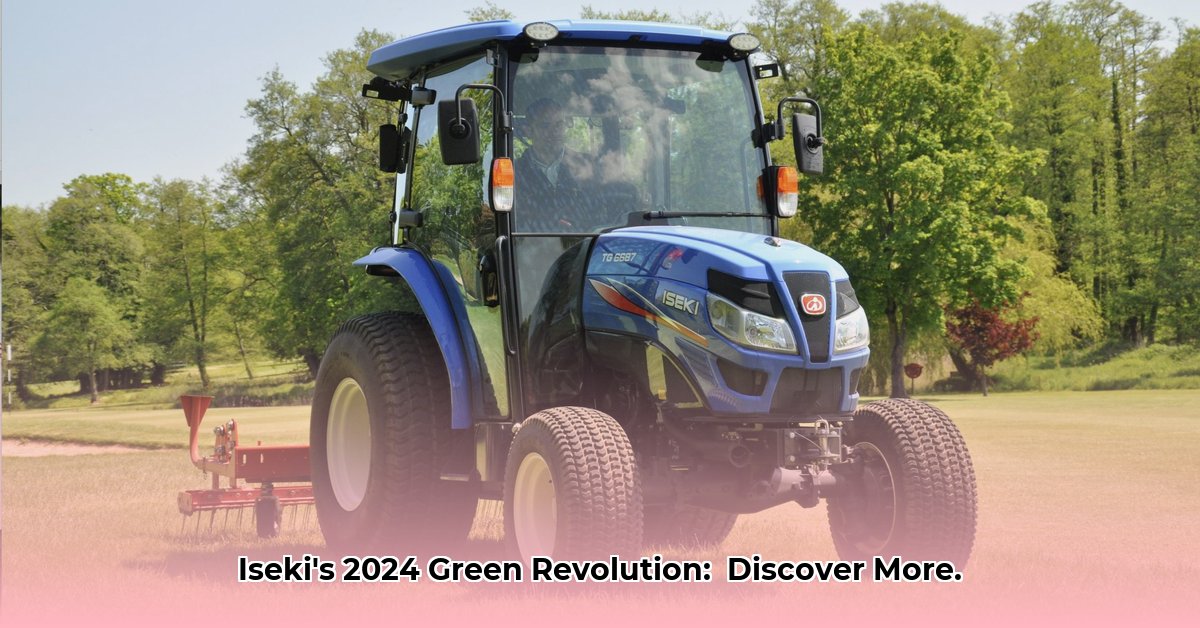
Iseki's Strong Financials: A Mixed Bag for Sustainable Agriculture
Iseki Tractor Company, a prominent player in the agricultural machinery market, demonstrates robust financial performance in recent reports. This suggests strong sales and positive investment potential. However, a critical analysis reveals a significant gap: a lack of readily available information on Iseki's investments and progress in sustainable agriculture technologies. While financial transparency is commendable, a complete assessment requires a detailed understanding of Iseki's commitment to environmentally friendly practices. This analysis examines Iseki's financial health, explores the available (and missing) data on its sustainable agriculture efforts, and provides actionable insights for stakeholders.
Financial Performance Overview
Iseki's recent financial reports indicate strong performance, suggesting healthy profit margins and robust sales. [Insert relevant financial data and charts/graphs from Iseki's reports here, including key indicators like revenue, profit margins, and market share. Source these figures and cite appropriately – e.g., (Source: Iseki Fiscal Year 2024 Report)]. However, this positive financial picture requires further analysis in the context of the company's stated commitment to sustainable agriculture. Do these strong financials reflect significant investments in, and returns from, sustainable technologies? This question remains unanswered.
Sustainable Agriculture Focus
Iseki's website showcases its traditional product lines, but detailed information regarding its commitment to and investment in sustainable agriculture technologies is limited. The lack of specific data regarding revenue generated from sustainable agriculture equipment represents a significant gap in the analysis. This raises several crucial questions: Is this a deliberate omission? Are they simply lagging in developing this sector of their business? Is this reflection of market conditions? Without comprehensive data, it's impossible to fully assess Iseki's role in the rapidly expanding sustainable agricultural machinery niche. This lack of transparency hinders a complete evaluation of Iseki's environmental impact and sustainability strategy. How do their competitors in this space compare with respect to their disclosures regarding sustainability and environmental practices?
Analysis and Interpretation
Iseki's solid financial performance is undeniable. However, the absence of comprehensive data on its sustainable agriculture initiatives prevents a full evaluation of its sustainability commitment. The financial success alone does not necessarily reflect a strong commitment to sustainable practices, nor provide a clear picture of the company's future direction in this critical area. Without a specific product breakdown showing the relative contribution of sustainable agriculture machinery to overall profits, we are limited in our ability to assess the effectiveness of their efforts. The available data suggests potential for growth in this sector, but the lack of detailed information significantly undermines the analysis. This information gap is concerning and necessitates further investigation.
Actionable Insights
The following recommendations address the information gap and provide actionable steps for various stakeholders:
For Iseki Management: Publish detailed financial reports segmenting revenues from sustainable versus traditional agricultural equipment. Implement robust ESG (Environmental, Social, and Governance) reporting frameworks to increase transparency and accountability [Efficacy Metric: Improved investor confidence, enhanced brand reputation].
For Investors: Demand greater transparency in sustainability reporting from Iseki and other agricultural machinery companies. Diversify investments to mitigate risks associated with information asymmetry in the sustainable agriculture sector [Efficacy Metric: Reduced portfolio risk, improved long-term returns].
For Policymakers: Implement regulations requiring comprehensive sustainability reporting from agricultural machinery manufacturers. Incentivize development and adoption of sustainable agricultural technologies [Efficacy Metric: Accelerated transition to sustainable agricultural practices].
For Sustainable Agriculture Businesses: Seek out opportunities for strategic partnerships with Iseki, focusing on co-development of sustainable technologies [Efficacy Metric: Increased innovation and market reach].
For Researchers and Analysts: Conduct comprehensive research on the financial performance of companies with robust sustainability practices versus those with opaque or incomplete reporting. [Efficacy Metric: Data-driven insights to inform investment strategies and policy decisions].
Conclusion
Iseki's financial health is strong. However, the lack of transparency regarding its investment in sustainable agriculture significantly limits a complete assessment of its contributions to this rapidly growing sector. The company's future success depends on clarifying this information gap through enhanced transparency and detailed reporting. Increased transparency and disclosure are paramount not only for investors but also for the broader adoption of sustainable agricultural practices. The potential for growth in the sustainable agriculture sector is substantial, but this potential relies heavily on companies like Iseki embracing both robust innovation and accountable reporting.